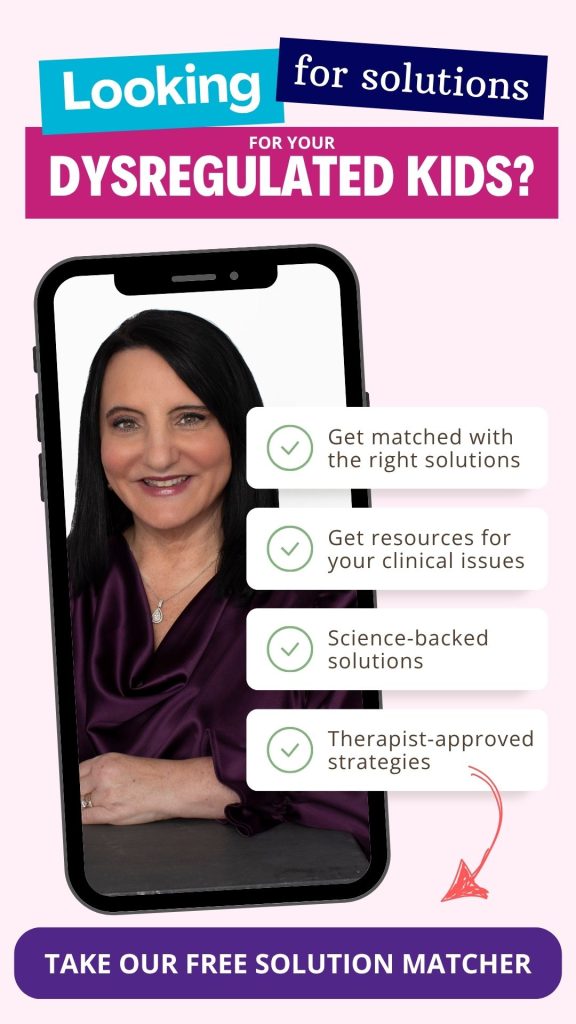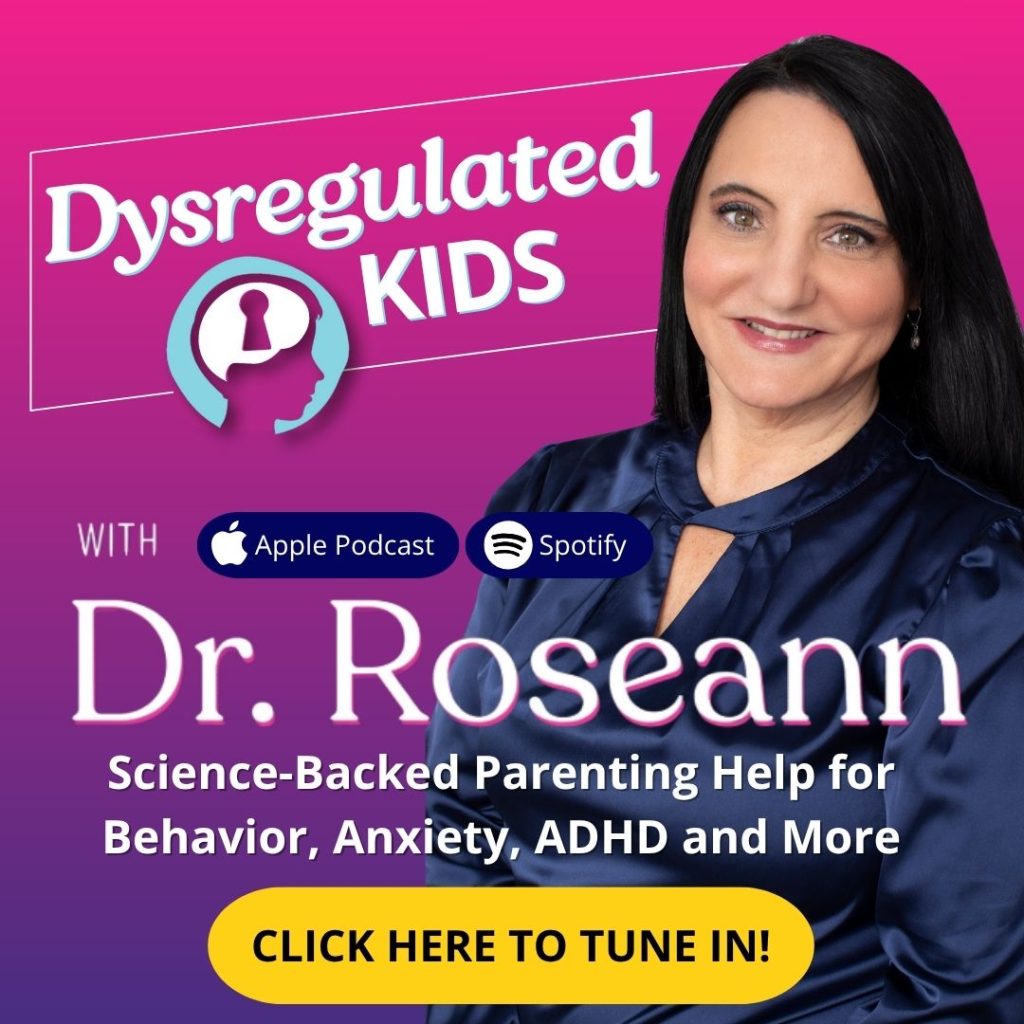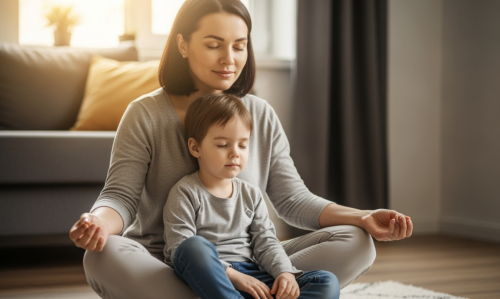Estimated reading time: 8 minutes
When your child goes from calm to chaotic in seconds, it’s often not just because of bad mood — it can be due to hidden triggers like a sound, smell, or a flicker of light.
You can do all the hard work, but if their surroundings keep setting off their brain, progress can slip away.
The good news? Once you identify those triggers, you can be more strategic with the changes you make to help your child stay calmer, longer.
In this blog, we’ll cover the most common environmental triggers for dysregulation, why they hit some kids harder, and how to create spaces that support — not sabotage — regulation.
Why the Environment Has Such a Powerful Impact on the Brain
Our nervous system is always scanning for safety.
For kids prone to dysregulation — whether from ADHD, anxiety, OCD, autism, mood disorders, or PANS/PANDAS — that internal “threat detector” is set on high alert.
What you or I might ignore — a flickering light, the smell of cleaning spray, the hum of a fan — can feel like an onslaught to a brain already running “hot.” Every sensory input adds to the load.

When that environmental stress builds, it can:
- Lower tolerance for frustration or change
- Increase irritability and impulsivity
- Make it harder to process instructions or complete tasks
- Trigger emotional outbursts or shutdowns
The tricky part? Many of these triggers are so subtle, you don’t see them until you start looking closely.
Research shows that kids with sensory sensitivities often have stronger physical reactions to everyday sights, sounds, and smells—making ordinary moments feel overwhelming (Ben-Sasson et al., 2009).
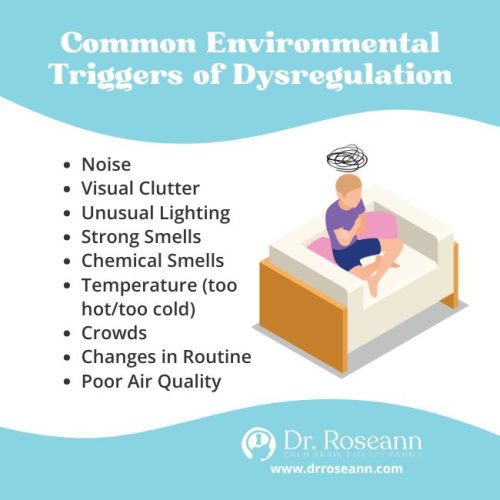
Common Environmental Triggers That Fuel Dysregulation
For kids with ADHD, anxiety, OCD, autism, mood issues, or PANS/PANDAS, their brain’s “threat detector” is always on high alert. What feels small to us can stack up fast for them, tipping the balance from calm to chaos.
Let’s break down some of the most common environmental triggers I see hijacking kids’ nervous systems — both at home and in school. Some you’ll spot right away. Others? They hide in plain sight until you start connecting the dots.
1. Sensory Overload from Noise
Ever tried focusing while a pencil taps behind you, a truck rumbles outside, and the TV blares from another room? For many kids, that’s their normal.
Background noise—even “happy” sounds like cheering or upbeat music—can drain focus and patience faster than a leaky balloon. Sensitive brains often treat noise like an ambush, setting off a stress cascade.
Research shows that children with sensory sensitivities can experience significant difficulties filtering background noise, which impacts attention and emotional regulation (Stansfeld et al., 2005).
What helps:
- Create quiet zones at home where your child can retreat
- Use noise-reducing headphones for homework or in noisy classrooms
- Reduce background noise during meals and homework
2. Visual Clutter and Overstimulation
Clutter doesn’t just crowd a room — it clogs a child’s mental bandwidth. A bedroom plastered with bright posters, piles of laundry in the corner, and constant motion in the periphery can overwhelm a sensitive brain.
Calm spaces help calm brains and improve focus (Evans & Wachs, 2010).
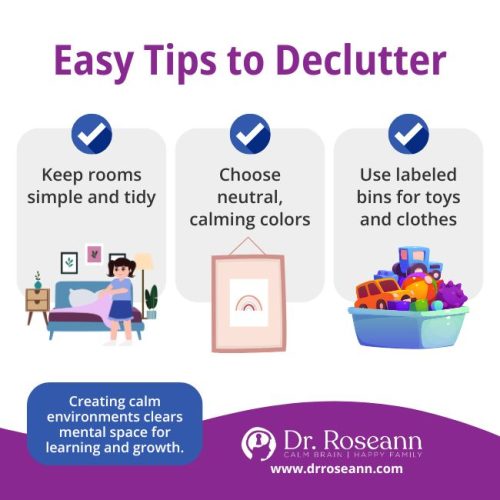
What helps:
- Keep main living spaces visually simple and organized
- Use calming, neutral colors in high-use areas
- Store toys, clothes, and school supplies in labeled bins or drawers
3. Lighting That Aggravates the Nervous System
Fluorescent lights hum and flicker like they’re whispering “headache incoming.” Sensitive kids can react strongly to harsh overhead lights or even the glow from screens before bed.
Light affects mood, energy, and sleep more deeply than many realize (Boyce, 2014).
What helps:
- Swap in warm LED or natural light bulbs
- Use lamps instead of bright overhead lighting
- Cut screen time in the hour before bed to protect rest
4. Strong Smells and Chemical Sensitivities
Ever walked into a room after someone sprayed cleaner and instantly felt off? Kids with chemical sensitivities often react even more strongly — headaches, nausea, irritability.
Artificial fragrances, scented candles, fresh paint… their nervous systems may interpret these as threats (Mendell, 2007).
What helps:
- Choose fragrance-free cleaners and laundry products
- Air out freshly cleaned or painted rooms before use
- Skip strong perfumes or colognes in close quarters
5. Temperature and Comfort Levels
Some kids are human thermometers — too hot and they’re cranky, too cold and they can’t focus. Even small shifts in temperature can rattle a sensitive nervous system (Lan et al., 2011).
What helps:
- Dress in layers so they can adjust easily
- Keep a blanket or fan nearby in their favorite spots
- Make sure school clothes feel good and match the season
6. Crowded or Chaotic Spaces
Big crowds can be exciting… until they’re not. Birthday parties, busy classrooms, even family gatherings can overwhelm a child who’s already working overtime to filter out noise and motion. That energy drain can hit fast (Lane et al., 2010).
What helps:
- Give a heads-up before heading into busy environments
- Plan breaks in quieter areas during events
- Limit exposure when you know a setting will be overstimulating
7. Changes in Routine or Environment
Even good changes — vacations, holidays, new teachers — can throw a child’s nervous system into a spin. Predictability feels safe, and when it vanishes, anxiety often takes its place.
What helps:
- Use visual schedules and clear explanations for what’s coming
- Break big transitions into smaller steps
- Keep anchors like bedtime and mealtimes steady
Research shows that behavioral inflexibility and anxiety in autistic children increased during disruptions like the COVID-19 pandemic, highlighting how crucial routine stability is (Dallman et al., 2022).
8. Poor Indoor Air Quality
Dust, mold, pollen, or poor ventilation can sap energy, affect mood, and cloud thinking. For kids with asthma, allergies, or sensitivities, this adds physical discomfort and nervous system strain.
In fact, indoor pollution doesn’t just affect kids now—it can impact cognitive development before birth and increase risks for conditions like autism and ADHD later on (Bozzola et al., 2024).
What helps:
- Change air filters regularly
- Use HEPA purifiers in bedrooms
- Open windows for fresh air when possible
The Cumulative Effect: It’s Rarely Just One Trigger
From what I’ve seen, dysregulation rarely comes from one big, obvious source. More often, it’s like a slow drip filling a bucket until—splash—it overflows.
Picture this: a child spends hours under buzzing, flickering classroom lights. Add a chatty desk neighbor who won’t stop tapping a pencil. Later, they come home to a messy playroom and a sibling blasting video game explosions.
Any one of those? Probably manageable. Stack them together, though, and that small bucket of calm tips over, flooding the day with overwhelm.
That’s why I remind parents—don’t just hunt for the “one big cause.” Instead, chip away at those tiny irritants. Even trimming a few can make a big difference in your child’s steadiness. Calm the brain first, and everything follows.
How to Identify Your Child’s Environmental Triggers for Dysregulation
You don’t need a fancy chart to figure out what’s setting off your child’s nervous system—just a simple way to track patterns for a week or two. Use a notebook, your phone, or even sticky notes on the fridge. The goal isn’t perfection—it’s spotting triggers before they hide again.
What to track:
- Location – Where dysregulation starts (home, school, playground)
- Time of day & activity – What your child was doing before the shift
- Sensory factors – Noise, lighting, smells, temperature
- Routine or environment changes – Even small shifts, like a substitute teacher or a new seating arrangement
What patterns might reveal:
- Meltdowns right after lunch → Possible triggers: cafeteria noise, fluorescent lights, certain foods
- Bedtime battles → Possible triggers: screens too close to bedtime, bright lighting, leftover adrenaline from active play
- Irritability during transitions → Possible triggers: sudden changes in noise, temperature, or activity
What to do once you find them:
- Make small, targeted changes—dim a light, reduce one noisy element, adjust timing of activities
- Notice how even small shifts can calm your child’s brain
- Remember: when the brain finds calm, everything else improves—focus, behavior, and joy
Calm the brain first and watch your child’s potential unfold.
Steps to Create a More Regulation-Friendly Environment
Once you’ve spotted those big flashing triggers, pour your energy into changes that give your child’s nervous system a real break. Think of it like patching the gushing leaks in a boat before worrying about the slow drips in the corner.
- Start small. Pick one or two trouble spots that pack the biggest punch.
- Bring your child into the conversation. You’d be surprised what they’ll share about what bothers them in certain places.
- Plan ahead for stressors you can’t dodge. Maybe that’s noise-canceling headphones during assemblies, a soft hoodie for scratchy uniforms, or a quiet nook when the world feels too loud.
- Loop in teachers and staff. When they know what steadies your child, they can help carry that calm right into the classroom.
Helping your child regulate goes beyond what’s happening inside their body. It’s about shaping the world around them so their brain can stay steady, focused, and safe.
Remove enough triggers and you clear space for learning, confidence, and even joy to take root.
If you’re ready for a clear, step-by-step plan, my Dysregulation Solution program gives you proven tools for calming the brain first—because once the brain is regulated, everything else follows.
FAQs
What environmental factors influence emotional responses in children?
Sensory inputs like noise, lighting, smells, and temperature all affect a child’s nervous system. Overstimulation or uncomfortable surroundings can trigger stress, making it harder for sensitive kids to stay calm and focused. Small changes often lead to big improvements.
How do changes in routine trigger dysregulation?
Predictability feels safe for many kids. When routines shift—new teachers, holidays, or transitions—the nervous system can react with anxiety or meltdown. Visual schedules and breaking changes into small steps can provide comfort and stability.
How do crowded spaces influence dysregulation?
Busy environments with lots of people can overload a child’s senses, especially if they’re already filtering noise and motion all day. This can quickly drain their energy and patience. Planning quiet breaks or giving heads-up before crowded events can help ease overwhelm.
Citations
Ben-Sasson, A., Hen, L., Fluss, R., Cermak, S. A., Engel-Yeger, B., & Gal, E. (2009). A meta-analysis of sensory modulation symptoms in individuals with autism spectrum disorders. Journal of autism and developmental disorders, 39(1), 1–11. https://doi.org/10.1007/s10803-008-0593-3
Boyce, P. (2021). Light, lighting and human health. Lighting Research & Technology, 54(2), 101–144. https://doi.org/10.1177/14771535211010267
Bozzola, E., Agostiniani, R., Pacifici Noja, L., Park, J., Lauriola, P., Nicoletti, T., Taruscio, D., Taruscio, G., & Mantovani, A. (2024). The impact of indoor air pollution on children’s health and well-being: the experts’ consensus. Italian journal of pediatrics, 50(1), 69. https://doi.org/10.1186/s13052-024-01631-y
Dallman, A. R., Perry, C., Goldblum, J., Butera, N. M., Boyd, B., & Harrop, C. (2022). Occupational Disruption: The influence of the COVID-19 pandemic on the behavioral inflexibility and anxiety of autistic children. The Open Journal of Occupational Therapy, 10(3), 1–13. https://doi.org/10.15453/2168-6408.1953
Evans, G. W., & Wachs, T. D. (2010). Chaos and its influence on children’s development: An ecological perspective. American Psychological Association. https://doi.org/10.1037/12059-000
Lan, L., Wargocki, P., Wyon, D. P., & Lian, Z. (2011). Effects of thermal discomfort in an office on perceived air quality, SBS symptoms, physiological responses, and human performance. Indoor air, 21(5), 376–390. https://doi.org/10.1111/j.1600-0668.2011.00714.x
Lane, A. E., Young, R. L., Baker, A. E., & Angley, M. T. (2010). Sensory processing subtypes in autism: association with adaptive behavior. Journal of autism and developmental disorders, 40(1), 112–122. https://doi.org/10.1007/s10803-009-0840-2
Mendell M. J. (2007). Indoor residential chemical emissions as risk factors for respiratory and allergic effects in children: a review. Indoor air, 17(4), 259–277. https://doi.org/10.1111/j.1600-0668.2007.00478.x
Stansfeld, S. A., Clark, C., Cameron, R., Alfred, T., Head, J., Haines, M. M., & Berry, B. (2005). Aircraft and road traffic noise exposure and children’s mental health. Journal of Environmental Psychology, 25(2), 115–123. https://doi.org/10.1016/j.jenvp.2005.07.001
Always remember… “Calm Brain, Happy Family™”
Disclaimer: This article is not intended to give health advice and it is recommended to consult with a physician before beginning any new wellness regime. *The effectiveness of diagnosis and treatment varies by patient and condition. Dr. Roseann Capanna-Hodge, LLC does not guarantee certain results.
Are you looking for SOLUTIONS for your struggling child or teen?
Dr. Roseann and her team are all about science-backed solutions, so you are in the right place!



